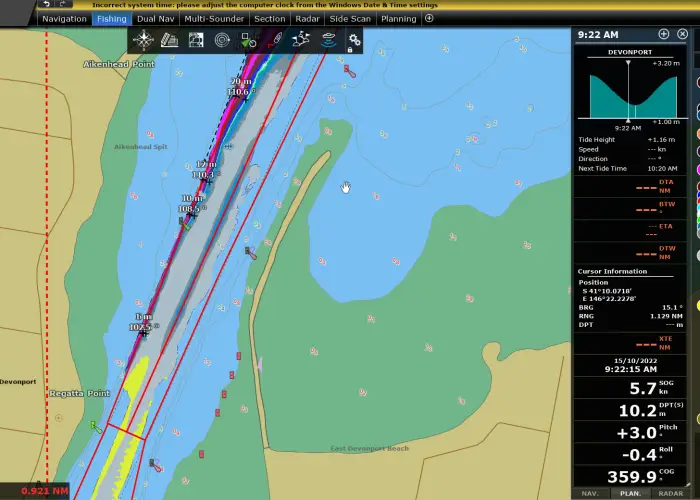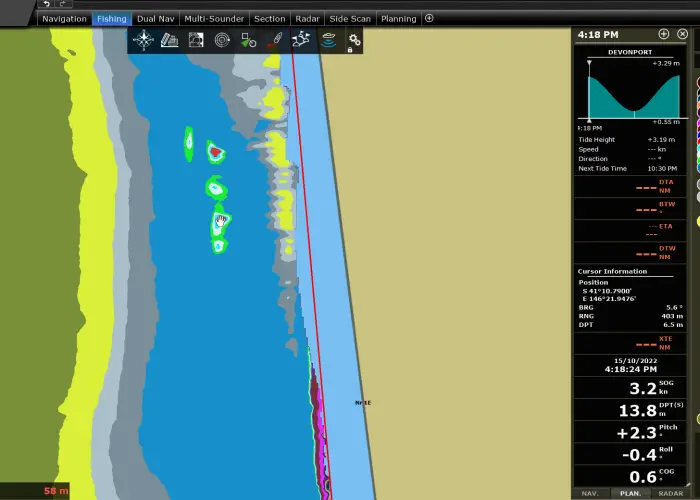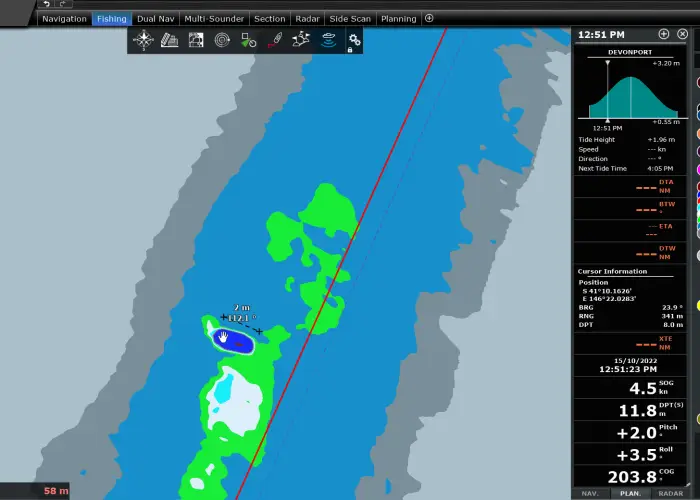Back-Water Blues - Heavy water and hidden debris
It is important to understand that there are potential dangers under the water, even if they aren’t visible from the surface.
Posted
19 October 2022
It is important to understand that there are potential dangers under the water, even if they aren’t visible from the surface.
Posted
19 October 2022
Floods are dangerous and can happen anywhere there is localised heavy rainfall. Heavy rainfall or quickly pooling or rushing water could be natural signs that flash flooding is happening.
Inland, floods can erode road and path surfaces leaving potholes, sinkholes and other dangers such as dislodgement of boulders onto roads and access ways.
In a port, flooded rivers can create dangerous currents that are a hazard to safe vessel manoeuvring, particularly for larger commercial vessels. Flood waters can also be deep, unpredictable and contain sewage and poisons, hidden snags, dead animals, displaced watercrafts and debris.
The thing about floods is that they can be unpredictable. While we may expect flooding to occur while it is raining, it can be after the rain has ceased that the effects of flooding can occur. As water from inland catchments makes its way out to the coast, the influx of this water is met with the tidal activity of coastal rivers.
Debris can be in the form of large trees/logs, dislodged marine infrastructure and displaced watercraft.
Through recent flooding events in the Port of Devonport, TasPorts deployed the tug vessel EDI, which is fitted for seabed sweeping. Originally in the port to conduct seabed levelling as part of Project QuayLink, EDI has the capability to complete visual assessments through hydrographic surveys of port, including channels and berth pockets.
By conducting hydrographic surveys, we’re able to identify the presence of isolated underwater dangers, those that aren’t visible from the shore. EDI is able to conduct on-board surveys in-house, detecting materials to less than 5cm accuracy in real time.
The three images below show the hydrographic surveys performed after flooding in the Mersey River. From these, we are able to identify at least 2 large submerged objects in the shipping channel.



During flood events, TasPorts enacts our emergency response plan to ensure the safety of our port users, vessels and port infrastructure.
In the event of severe weather conditions at any of our ports, operations will be under careful watch, with teams monitoring conditions for any changes that could cause harm to people or assets.
Our Harbour Master, is empowered by statute to issue directions and notices to mariners to ensure the safety of all harbour users, will communicate with customers, stakeholders and the community if the operations at a port have been affected. Harbour Masters are tasked with reviewing, implementing and enforcing policy for the ports we manage.
However, we are not the source of truth for alerts and advice outside of our ports. Through severe weather events and emergencies, TasPorts will always take advice from Tasmania’s emergency services.
Below is a list of emergency contacts all Tasmanians should be familiar with in the event of an emergency:
Latest warnings | Bureau of Meteorology | www.bom.gov.au/tas/warnings |
| Latest weather forecast | Bureau of Meteorology | www.bom.gov.au/tas/forecasts |
| Latest rainfall and river levels | Bureau of Meteorology | www.bom.gov.au/tas/flood |
| Latest catchment information | Hydro Tasmania | www.hydro.com.au/water/lake-levels |
| Flood and storm safety | State Emergency Services | www.ses.tas.gov.au |
| Road closures | Tasmania Police | www.police.tas.gov.au |
| State-wide warnings | TasAlerts | www.alerts.tas.gov.au |